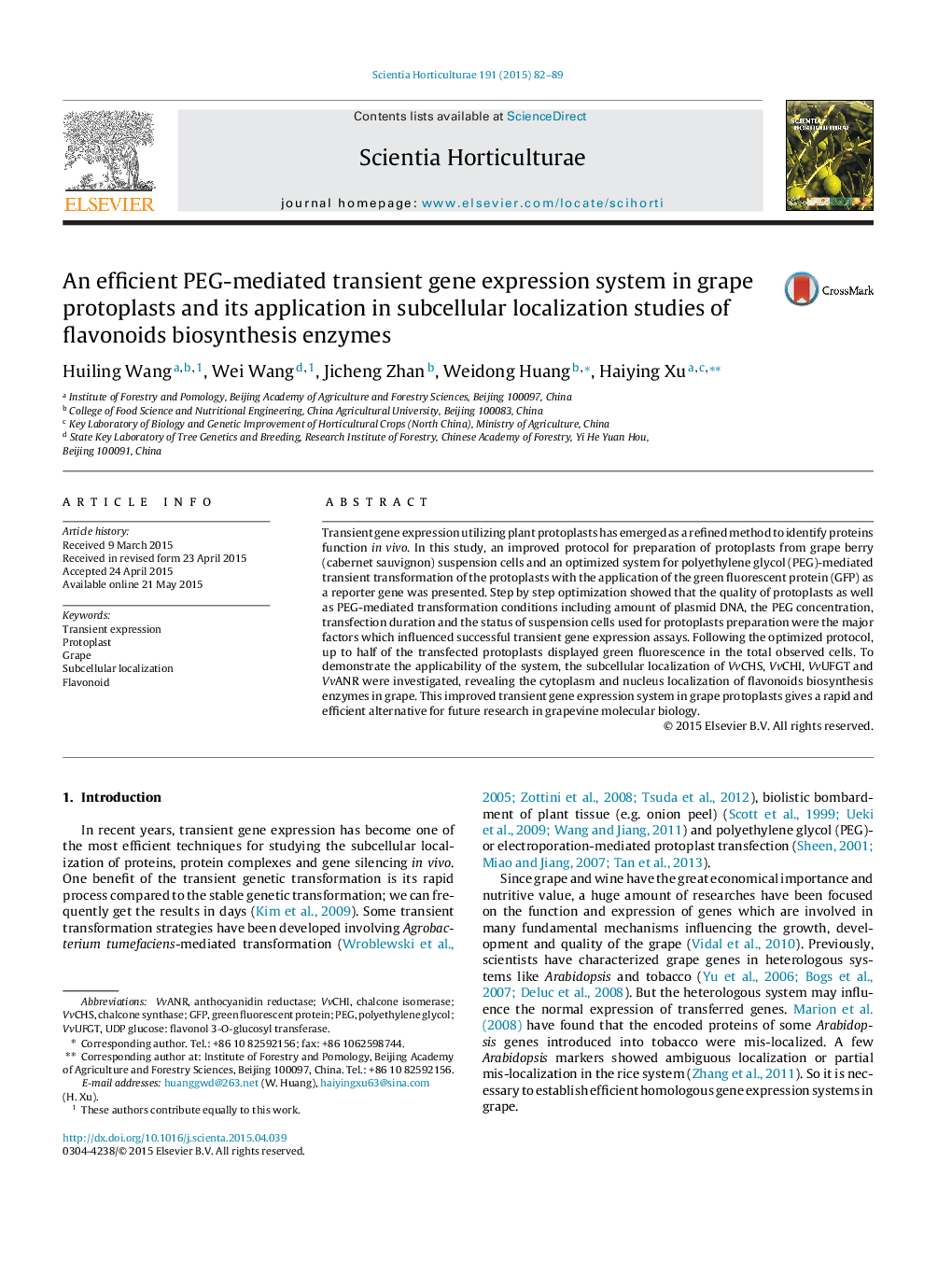| Article ID | Journal | Published Year | Pages | File Type |
|---|---|---|---|---|
| 4566300 | Scientia Horticulturae | 2015 | 8 Pages |
•An efficient protocol for protoplasts isolation from grape berry suspension cells was presented.•PEG-mediated transient transformation system in grape protoplasts was optimized.•Using the optimized transient system, up to half of the transfected protoplasts displayed green fluorescent.•The subcellular localization of flavonoids biosynthesis enzymes in grape was investigated.
Transient gene expression utilizing plant protoplasts has emerged as a refined method to identify proteins function in vivo. In this study, an improved protocol for preparation of protoplasts from grape berry (cabernet sauvignon) suspension cells and an optimized system for polyethylene glycol (PEG)-mediated transient transformation of the protoplasts with the application of the green fluorescent protein (GFP) as a reporter gene was presented. Step by step optimization showed that the quality of protoplasts as well as PEG-mediated transformation conditions including amount of plasmid DNA, the PEG concentration, transfection duration and the status of suspension cells used for protoplasts preparation were the major factors which influenced successful transient gene expression assays. Following the optimized protocol, up to half of the transfected protoplasts displayed green fluorescence in the total observed cells. To demonstrate the applicability of the system, the subcellular localization of VvCHS, VvCHI, VvUFGT and VvANR were investigated, revealing the cytoplasm and nucleus localization of flavonoids biosynthesis enzymes in grape. This improved transient gene expression system in grape protoplasts gives a rapid and efficient alternative for future research in grapevine molecular biology.
